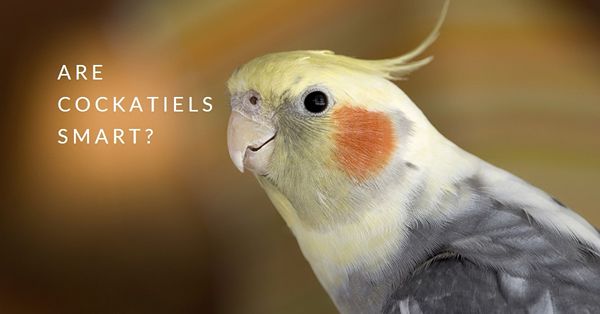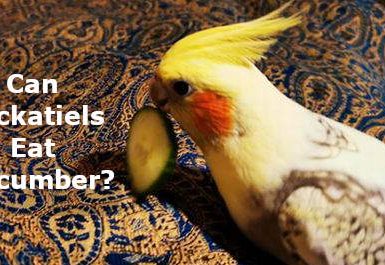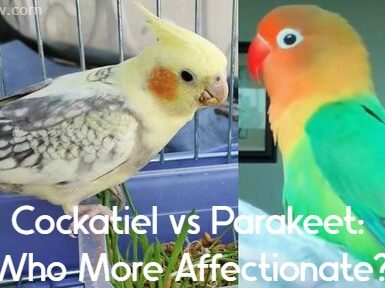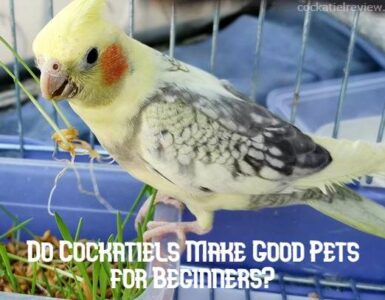
Male orcas are one of Australia’s most striking and most beautiful birds. Their striking appearance and extraordinary behavior have captured the attention of bird lovers as well as scientists around the world.
Wise or Not: What We Know About Cockatiels
In reality, scientists are still investigating almost every nuance of orca life and behavior, including visual, auditory, motor, and arboreal abilities. Thanks to this, almost every fascinating case study has been released over the orcas, and our knowledge of these magical birds expands.
In this post we will look at some of the characteristics that make them unique among other birds. We will talk about how wise they are, how they talk to their partners, and how they adapt to life in the wild.
What kind of bird are they?
Groenpootapen are small parrots belonging to the real parrot genus. Their most important characteristics are their colorful plumage, intense behavior, and ability to mimic sounds.
Corella weighs less than 100 grams and has a body size of 30-50 centimeters. They live in the wild in Australia and on fresh Guinea and adjacent islands.
It is important to note that almost all types of greens are protected and are threatened with extinction.
Corellas are social birds that live in a group called chaperones. They are often kept as family animals because they are quite attractive and easy to tame.
- Amazingly, cockatiels can mimic not only bird sounds but also other sounds such as telephone horns and bends.
- In the wild, cockatoos eat seeds, fruits, flowers, and insects.
- One of the more popular variations of cocking is the pink one-crush parakeet. It owes its name to the striking pink coloration of its face and chest.
A kind of cockatiels
George’s male cockatiel is the largest of the existing grayish-gray cockatiels. The bird reaches a length of 40 cm. Its plumage is bright green with yellowish lines and red spots on the breast.
The violet cholera is one of the rarest and most expensive cockatiels. In the wild, he appears only on remote tree tops in Australia. His plumage is silvery and his supraorbital nose is striking.
– Malcolm’s Cockatiel – smaller in size and has a short snout. His plumage is greenish with yellowish stripes and reddish secondary coloration on the wings. Popular for his own jovial and silly personality.
-The Multicolor Cockatiel- stands out with its striking color scheme featuring a wide printed breast and reddish, orange and yellowish flowers. This picture of Corella is suitable for lovers of flowers and exotic qualities.
Corella Rotunda-Australia, fresh Zealand, more in southern Indonesia, lives in river systems. The main color of the feathers is bronze green with scattered blue and gray. This pattern of cholera is known for its own keen intelligence and familiarity with a variety of commands, convenience and large catch.
Species
There are approximately 50 species of cockatiels, which differ not only in appearance but also in behavior. The best known are the common rooster, the blue rooster, and the Madagascar hare. Additionally, there are several copies of some of them, such as the comic and the sunset.
Roosters can still be distinguished from one another. Some forms have clear blue or blue plumage, others are yellowish, greenish, or orange. Blue circles around the eyes are common in Madagascar corellas. This is not considered. Corella size size is 30-33 cm in length.
Special features and characteristics unique to each species make male and female cockatiels the original look of the bird. This is not only a source of pleasure for bird owners, but also a fascinating topic for scientists.
Description of the most important types of cockatiels
Reddish
– The color of the feathers is a transparent red.
– Size is relatively small.
– Voice is sublime and penetrating.
– Quite an active and curious bur bird.
Blue spot Сockatiels
– Blue spots on head and face.
– Feathers are snow white.
– Average size.
– Fairly friendly, friendly and tame.
Groenneus-Corella
– Greenish “cap” on head.
– Dark glasses, nose and legs gray.
– Average size.
– Good to train.
Black – Heart-Corella
– Lead and neck feathers blue.
– Rest of feathers grayish.
– Nose and legs are dark.
– Size is great.
– Very social and curious burs a very social and curious bird.
Corellian Yellowhead
– Brownish plot on head and face.
– Size is great.
– Voice clear and reverberant.
– Very social and curious burs thriving bird.
Buddennova
– Feathers are greenish with yellowish, blue and reddish flowers.
– Size is great.
– Voice is hard-hitting.
– Some willing to nominate text or sound.
The intellectual capacity
Ability to learn. Corella’s are very trainable. They can learn up to 200 texts and rations. Almost all owners say that these birds can recognize objects and influences as well as respond to their names and nobility if they need to return to the cage.
Communication. Wise birds, these are all likely to use sound to convey information, as correls. They can communicate with other birds, including people, using recognized sounds. If they want to tell each other something, they communicate with each other.
Analytical Ability.Korella have the ability to analyze and complete tasks. In studies of male or female cockatiels, these birds used two bars to obtain food. Then the bar turned into one length and then into a tortured accessory. As a result, the great tits were able to overcome all these tasks and acquire their own advantages.
Playfulness. Male or female calves love to spread their playfulness and ability to spread out. They have the opportunity to play with their toys, throw them in the air, catch them and eat them, but also have fun with others.
Friendliness.Orenends have the opportunity to show friendliness to their owners and other birds. They have every opportunity to get to know other animals and show all kinds of energy and communication with people.
Reach and IQ
Corella’s are wise birds that have every opportunity to perform fairly difficult tasks. They are willing to explore new texts, solve puzzles, and teach other birds. They also sing, dance, and mimic sounds.
Corellel activities can have an important impact on IQ. For example, cockatiels living in the wild and in all its difficulties often have a more developed ability to complete tasks and become accustomed. At the same time, falcate parakeets living in zoo and family contexts often have the opportunity to adapt to their normal environment and show the most intelligent abilities.
Several studies have shown that the average IQ of cholerae is around 100, which can be compared to the average IQ of humans. However, as with all animals, grain IQs vary with genetics, diet, housing conditions, and researchers.
- In general, male or female cockatiels can be classified as sensible birds capable of performing difficult tasks.
- This has the ability to affect IQ in the working area of the cockatiel as a family condition.
- The average IQ of a male or female cockatiel is in the 100s, comparable to the average IQ of humans.
What is known about their ability to understand language and empathize
Cockatiels are the original birds and can nominate texts and tirades, can show impressions and empathy. But how wise are they to distinguish themselves from other birds?
Phonetic Concepts
Research shows that cholerae can learn to make sounds in addition to the entire text and tirade. But that does not mean they know the meaning of what they say.
Empathy.
The Groenpootruiter has every opportunity to show compassion and pity, which creates the hope that he has an empathic capacity. For example, if one of the birds in the basket has a problem, the other birds worry about him and begin to help him.
The ability to distinguish colors has also been studied and it turns out that birds have every opportunity to learn up to six colors.
In general, roosters can be said to have several unique characteristics, but they are not considered super-relative birds, such as crows or pigeons.
Male repayers are fairly well known family house animals. They are chosen by people who want to brighten their homes with the stay of a cheerful bird.
They require no special care or nurturing, but rather a lifetime (up to 20 years). A good table, clean water and feed, and light and temperature control are all that is needed to guarantee a good environment.
Corella have an impressive personality and have the opportunity to talk and make noise. They are social and demand a lot of attention from their owners.
If you decide to take a falcate parachute as a domesticated dog, remember to feed him complete bird food and socialize him regularly. Cockatiels also like to play and get to know other birds and people.
– Advantages: easy to maintain, endless life, colorful, personalized, chatty and cozy.
– Cons: need for care and attention, sensitive to screaming and manipulation, need for adequate freedom of movement (a large cage or avildome is most appropriate).
Are there any advantages to the host?
Corella has the opportunity to be an excellent householder for someone looking for an eastern interior. These birds are social, peaceful, and very nice to families.
However, they are not always suitable for flat housing as they are rather loud and can be disliked by neighbors. If you live in an apartment, cocking can be a great airbird and a lot of positive experiences.
In addition, cockatiels can improve your mood and help you get to know an animal like no other. Caring for your cockatiel will also help you learn more about nature and let the elegant bird entertain you in your own home.
However, like all residents, cockatiels urgently need immediate attention and attention to detail. They need saturation, attention to their cage, and time together. If you are willing to undertake this task, cocking has the opportunity to be a beautiful addition to your home.
Recommendations for Keeping the Family in Context
Kooi for Cockatiels: If you decide to house cockatiels, remember to buy a special cage for the birds. This should be spacious enough so that the birds can move around easily. In addition, the cage should have feeders for seed and water and nesting space.
Feeding: Feeding should be done daily and should provide fruits and vegetables that are pre-cut and cut into small pieces. In addition, he must have access to fresh drinking water daily and the cage floor must be replaced if it becomes dirty.
Lighting: If Corella is to be able to settle successfully, the correct type of light is necessary. Birds love sunlight, but an excess of sunlight can be harmful to their eyes and float.
INTERNAL TEMPERATURE: The internal temperature should be no less than 10 degrees Celsius and no more than 30 degrees Celsius. Too much or too little heat can be detrimental to the bird’s welfare.
Quick Answers
Question: What are the skills of cocking?
Ans: Cocking is popular for its ability to make sounds and text, and has an increasing degree of comprehension and memory. They are also willing to do routine tasks and participate in training.
Question: Do they have every opportunity to perceive human speech?
Answer: they do not have the opportunity to understand human speech at the level of meaning and context, but they are willing to learn the sounds and texts dealing with some common sentences.






Add comment